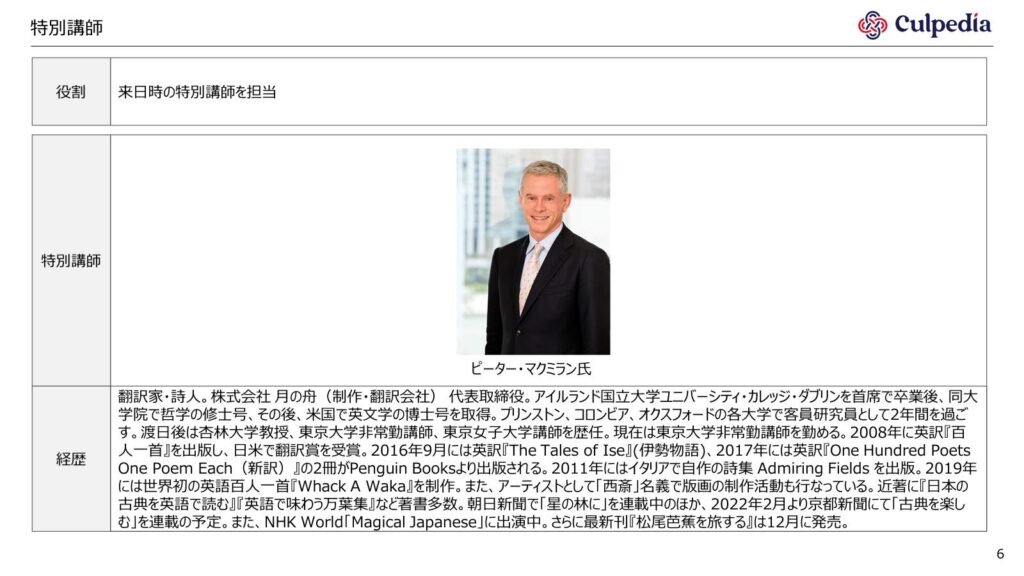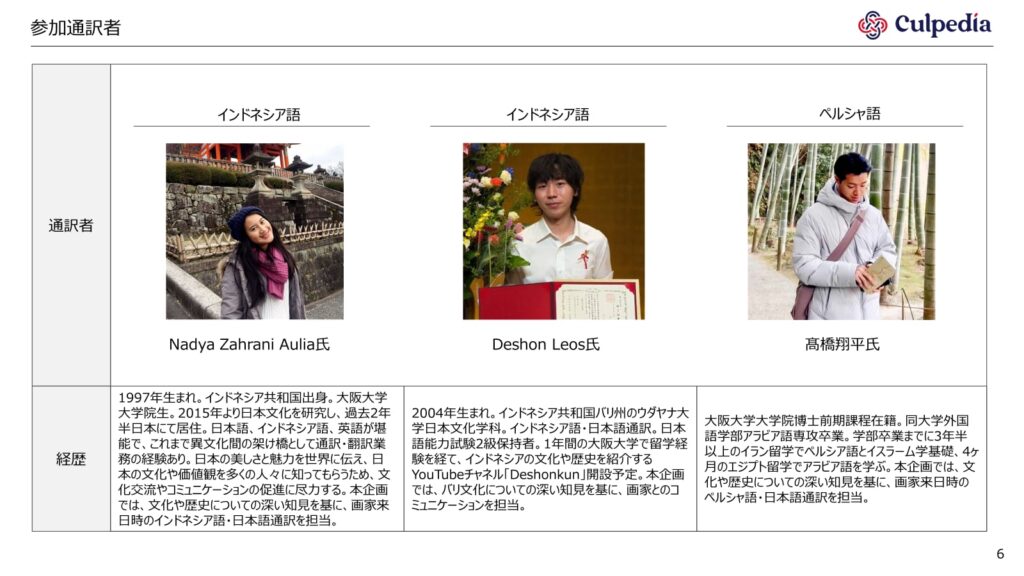
Introduction
Culpedia was established by Yuki Tokunaga, the project organizer, in August 2020 to pass on and exchange traditional culture.
Our challenge this time is the Japanese spirituality of “wabi and sabi.” Japanese spirituality is highly appreciated around the world, and many foreign celebrities are also fans of Japanese culture. For example, Steve Jobs famously practiced Zen at a temple in Kyoto.
On the other hand, spirituality is difficult to visualize, and even with the best of words, it takes work to convey the uniqueness of Japanese spiritual culture. Therefore, we decided to ask foreign painters (from Iran and Indonesia) and contemporary Japanese artists to draw three pictures of the words “wabi and sabi.”
Background of facing this theme
The planner studied abroad five years ago. At that time, when talking with a local person, he was asked, “What is Wabi-Sabi?” (“What is the meaning of Wabi and Sabi?”). I was also asked many other questions about Japanese history and culture, but I could not answer any of them correctly.
At that time, I thought, “How can I explain Japanese culture to people from overseas?" Over the past few years, I have tried my hand at researching traditional Japanese crafts and at a project to have illustrations of Japanese stories painted by traditional Japanese artists from overseas (both of which will be described later).
What we want to achieve with this project
We will ask foreign artists (Iran, Indonesia) and Japanese contemporary artists to draw pictures using the same theme as the phrase "wabi and sabi" over three times.
In the first phase, from March to the end of May 2024, we will translate the words from the dictionary into the respective languages and ask the artists to draw a picture based solely on the information's inspiration (no research on the Internet is allowed).
Next, in the second phase, from June to the end of September 2024, we will release all information from books and the Internet, and you will gather information as you wish. We also plan to have lectures on the concept from experts, if necessary. Based on this, we will ask you to draw one picture.
As the third step, the painter will visit Kyoto in October 2024 (tentative) to thoroughly experience wabi and sabi through the cultural program we have designed. Then, upon their return to Japan, we will ask them to paint a third painting.
By comparing the first, second, and third paintings and how each changes, we hope to create a tangible expression of how the three painters have embraced the spirituality of Japanese culture. This will allow foreigners and Japanese people to familiarize themselves with the spirituality of wabi and sabi through the paintings.
By continuing this project, we want to continue to create a system that will enable Japanese people to introduce the simplicity and essence of their own culture when they go out into the world.
The following three painters will participate in this project.

The planner and another person serve as coordinators to help the three painters deepen their understanding of wabi and sabi.



Here is the first painting completed at this time. Two additional paintings will be completed between September and February of next year, for a total of six paintings.
The best part of this project is seeing how the paintings will change.

For more information, please click here.
Supporters (titles omitted)
We would like to respectfully list our crowdfunding supporters' names (user names).
Thank you very much for your cooperation.
Itta Tojiki, Takahiro Mizushima, Ichiyo, イチカワシュウ, 金川信亮, 北原利道, Kimchi Tel Aviv, Kenji Kinoshita, Y T, 田村敏樹, Kumiko, Masa Naka, Yusuke Nohara, K M, 樋口祥子, fuji, 山上 明彦, willnakajima, 本間 超, Hiroshi Ishida, Yoshiro Enomoto, ODA, M. Kurozumi, 高橋耶真人, kimiko, motohiro, Haruka, ふるの, Yosuke Kotake, T.usami, Yuto Takeuchi, Masa, 谷口綾子, 戸敷美紗, 冨岡隆人, Misaki?, 仁科雅晴, Micah, Kento Mori, Zen Miyajima, is mo, 岩沙はるか, kananx87,Keiko.C, Mari_tkng, Kotaro Nagane, Kengo Maeda, 山田翔太
